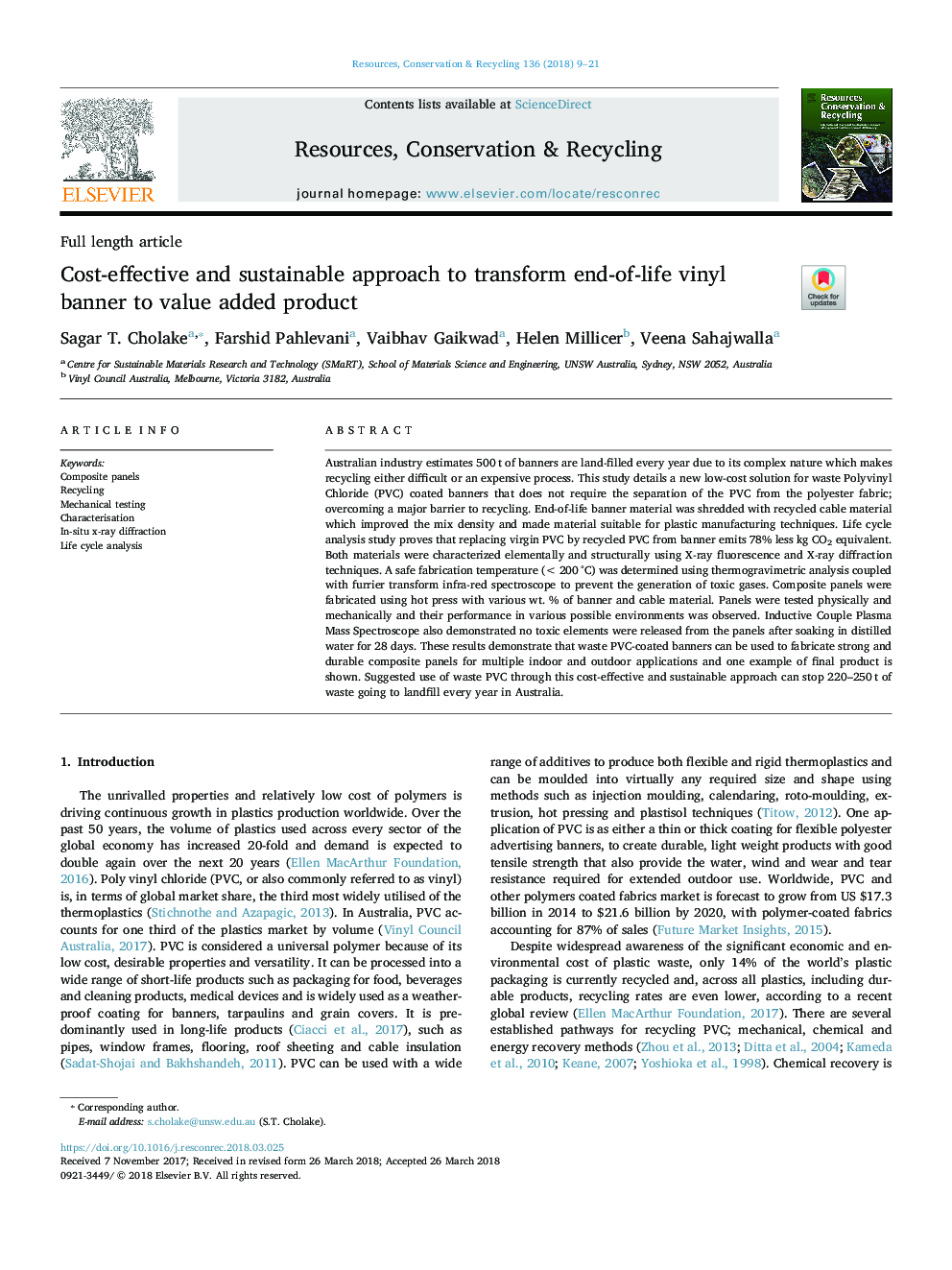| Article ID | Journal | Published Year | Pages | File Type |
|---|---|---|---|---|
| 7493927 | Resources, Conservation and Recycling | 2018 | 13 Pages |
Abstract
Australian industry estimates 500â¯t of banners are land-filled every year due to its complex nature which makes recycling either difficult or an expensive process. This study details a new low-cost solution for waste Polyvinyl Chloride (PVC) coated banners that does not require the separation of the PVC from the polyester fabric; overcoming a major barrier to recycling. End-of-life banner material was shredded with recycled cable material which improved the mix density and made material suitable for plastic manufacturing techniques. Life cycle analysis study proves that replacing virgin PVC by recycled PVC from banner emits 78% less kg CO2 equivalent. Both materials were characterized elementally and structurally using X-ray fluorescence and X-ray diffraction techniques. A safe fabrication temperature (<200â¯Â°C) was determined using thermogravimetric analysis coupled with furrier transform infra-red spectroscope to prevent the generation of toxic gases. Composite panels were fabricated using hot press with various wt. % of banner and cable material. Panels were tested physically and mechanically and their performance in various possible environments was observed. Inductive Couple Plasma Mass Spectroscope also demonstrated no toxic elements were released from the panels after soaking in distilled water for 28 days. These results demonstrate that waste PVC-coated banners can be used to fabricate strong and durable composite panels for multiple indoor and outdoor applications and one example of final product is shown. Suggested use of waste PVC through this cost-effective and sustainable approach can stop 220-250â¯t of waste going to landfill every year in Australia.
Keywords
Related Topics
Physical Sciences and Engineering
Energy
Renewable Energy, Sustainability and the Environment
Authors
Sagar T. Cholake, Farshid Pahlevani, Vaibhav Gaikwad, Helen Millicer, Veena Sahajwalla,
